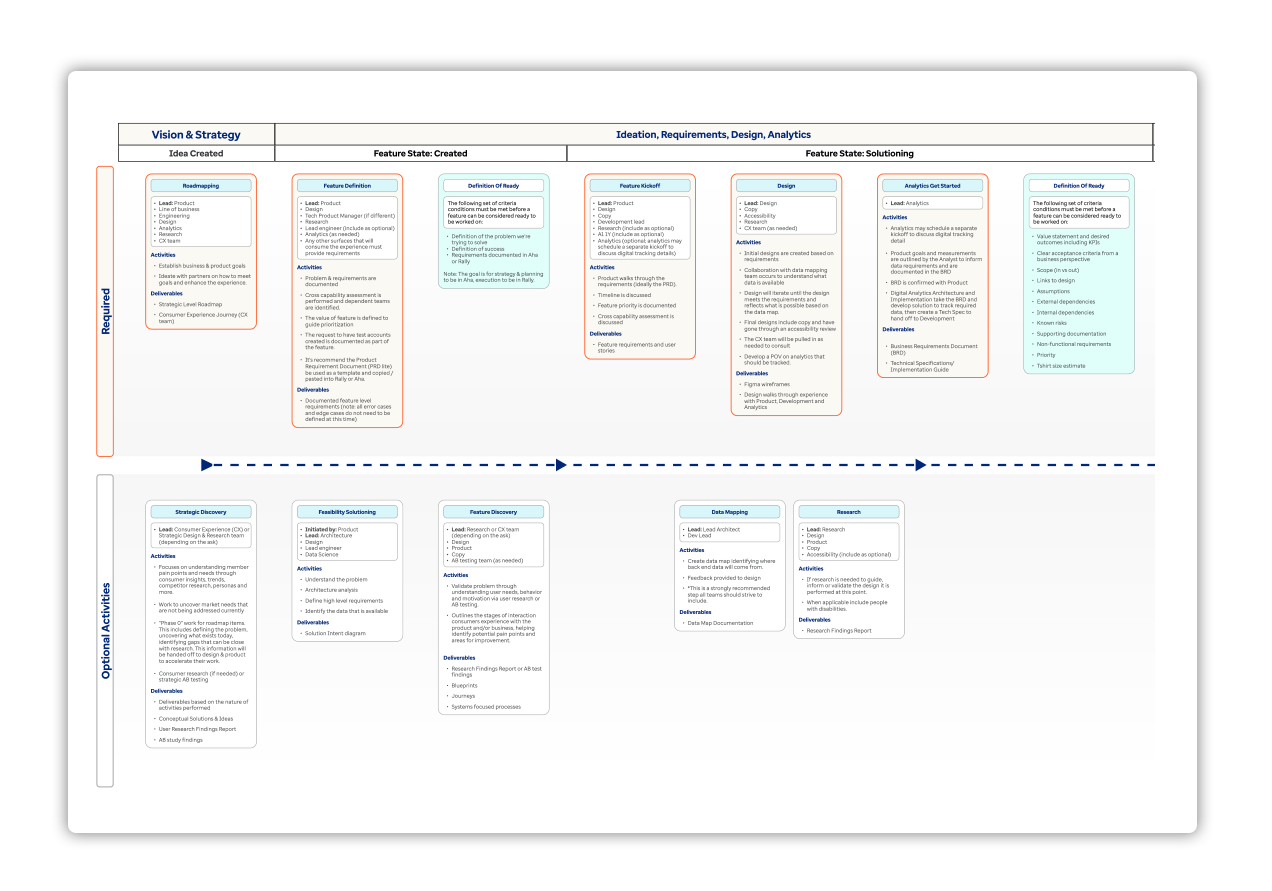Designing from the inside out
Chapter 3 / Optum
Things weren’t broken. But they were tangled.
Five teams. Dozens of products. Competing goals. Everyone doing good work—just not together.
Designers felt disconnected. Leaders lacked clarity. And the people we were designing for? They felt it too.
I didn’t come in with a blank slate. I came in to make sense of the mess.
My role was to bring the pieces together—so we could stop working in circles and start designing with purpose.
Unifying Through Empathy
I didn’t start with structure. I started with listening.
Designers were hungry for connection. Leaders wanted alignment. People were tired of reinventing the wheel in isolation. So I brought the teams together—not just in meetings, but in mission.
We built shared rituals. Opened up conversations. Found commonalities in the work—even across vastly different products. I modeled curiosity by learning each business, so I could surface themes that brought everyone into the same room with shared purpose.
Empathy wasn’t just something we designed for. It was how we rebuilt trust inside the org.
Clarifying the System
Next, we got practical.
We created a unified design org with clear lines of leadership, shared standards, and intentional collaboration across business lines. We didn’t erase differences—we honored them, while still designing toward one end-to-end patient experience.
We streamlined how we worked with product, engineering, research, and data. We built shared design systems. We launched cross-functional journeys to reduce redundancy and increase quality—so teams weren’t just shipping faster, they were solving the right problems.
Clarity wasn’t a top-down directive. It was a system we co-created—together.
Building with Trust
With trust, we scaled.
I advocated for design at the highest levels—making sure experience wasn’t seen as a wrapper, but as a driver of business value. I brought in new leadership where we needed fresh perspective. I empowered people to take ownership of their domain, while still moving in sync with the broader vision.
We embedded accessibility and research into product workflows—not as checklists, but as ways to deepen understanding and inclusion. We made space for teams to experiment, to lead, to grow.
Because when people feel trusted, they design differently. They lead differently. They stay.
Real Results, Real Impact
This wasn’t just cultural—it was operational. We saw:
A 40% increase in engagement on Optum.com
A 35-point increase in NPS for the redesigned Optum Bank app
A new flagship mobile app that unified the consumer experience—making it easier to find care, manage authorizations, and communicate with providers
And across the team, we saw stronger collaboration, more cross-functional momentum, and a culture where people felt happier, more connected, and proud of the work they were doing
We proved that when you fix the inside, the outside gets better too.
I didn’t just lead a team—I untangled a web of people, systems, and experiences.
In a time of change, I led with empathy—steady in the chaos, clear in the noise, human through it all.
Because the truth is, great design doesn’t come from process. It comes from people.
At Optum, the work isn’t done.
It’s an ongoing practice—of listening, adapting, and caring.
And when you lead with empathy, clarity, and trust,
you don’t just improve the experience. You grow a culture—with heart.





